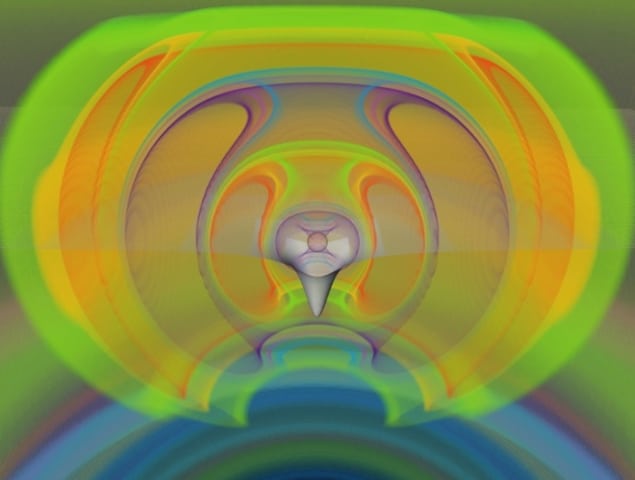
Data from the recent observation of gravitational waves from the merger of a binary neutron star have been used to place a new and very precise upper limit on the mass of neutron stars. Luciano Rezzolla and colleagues at Goethe University in Frankfurt, Germany have calculated that a neutron star can be as large as 2.16 solar masses without collapsing under its own gravity to form a black hole.
Neutron stars are formed when a star larger than the Sun explodes in a supernova, leaving behind an extremely dense and compact remnant. If the remnant is more massive than about two Suns, it will collapse into a black hole. Smaller remnants avoid collapse and become neutron stars. However, the internal properties of neutron stars have long been a mystery for physicists, making it especially difficult to make a precise calculation of the upper limit on the mass of neutron stars.
First glimpse
In August 2017 the LIGO and Virgo experiments detected gravitational waves characteristic of two neutron stars spiralling into each other, merging and collapsing into a black hole. The observations gave scientists a first glimpse into the interior structures of neutron stars.
Through theoretical calculations, Rezzolla and colleagues found the ability of the merged neutron star to sustain itself against gravitational collapse depended strongly on the dynamics of the nuclear matter inside. Uniformly rotating matter in the core of the object could hold out against collapse more effectively than non-rotating material.
Simpler calculation
However, the team also found that the properties of all the material inside neutron stars could be described using the same physical equations, regardless of the dynamics. This meant that calculating an upper mass limit for the merged neutron stars is much simpler than previously thought. Combining the data produced by LIGO and Virgo with their theoretical models, Rezzolla’s team could calculate their mass limit to be 2.16 solar masses, within an error of just a few per cent.
Rezzolla believes the work is an exciting early example of theoretical calculations being used to explain data from observations of gravitational waves. He hopes that his team’s calculation will be further refined using future observations of gravitational waves.
The research is described in The Astrophysical Journal Letters.



